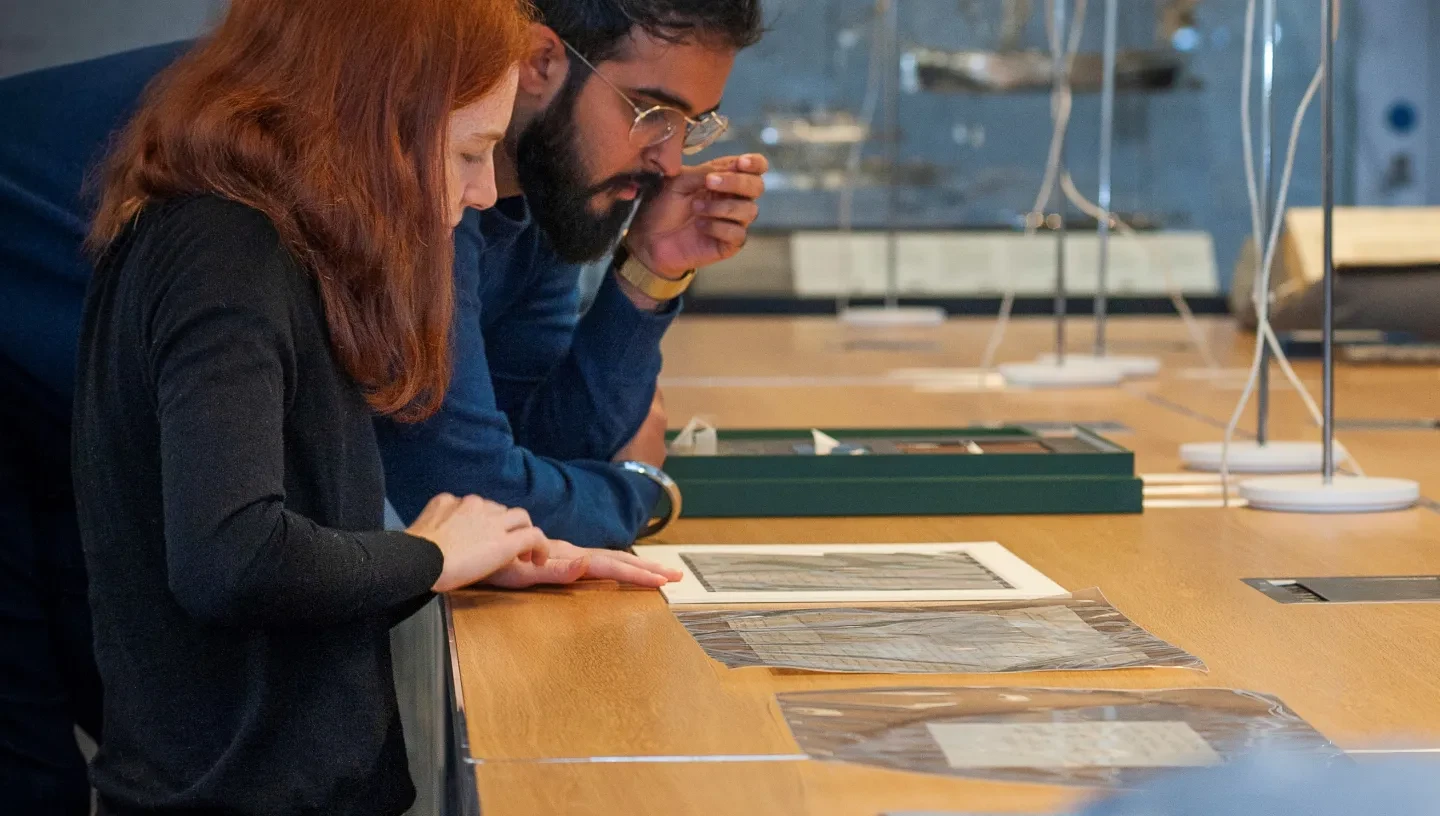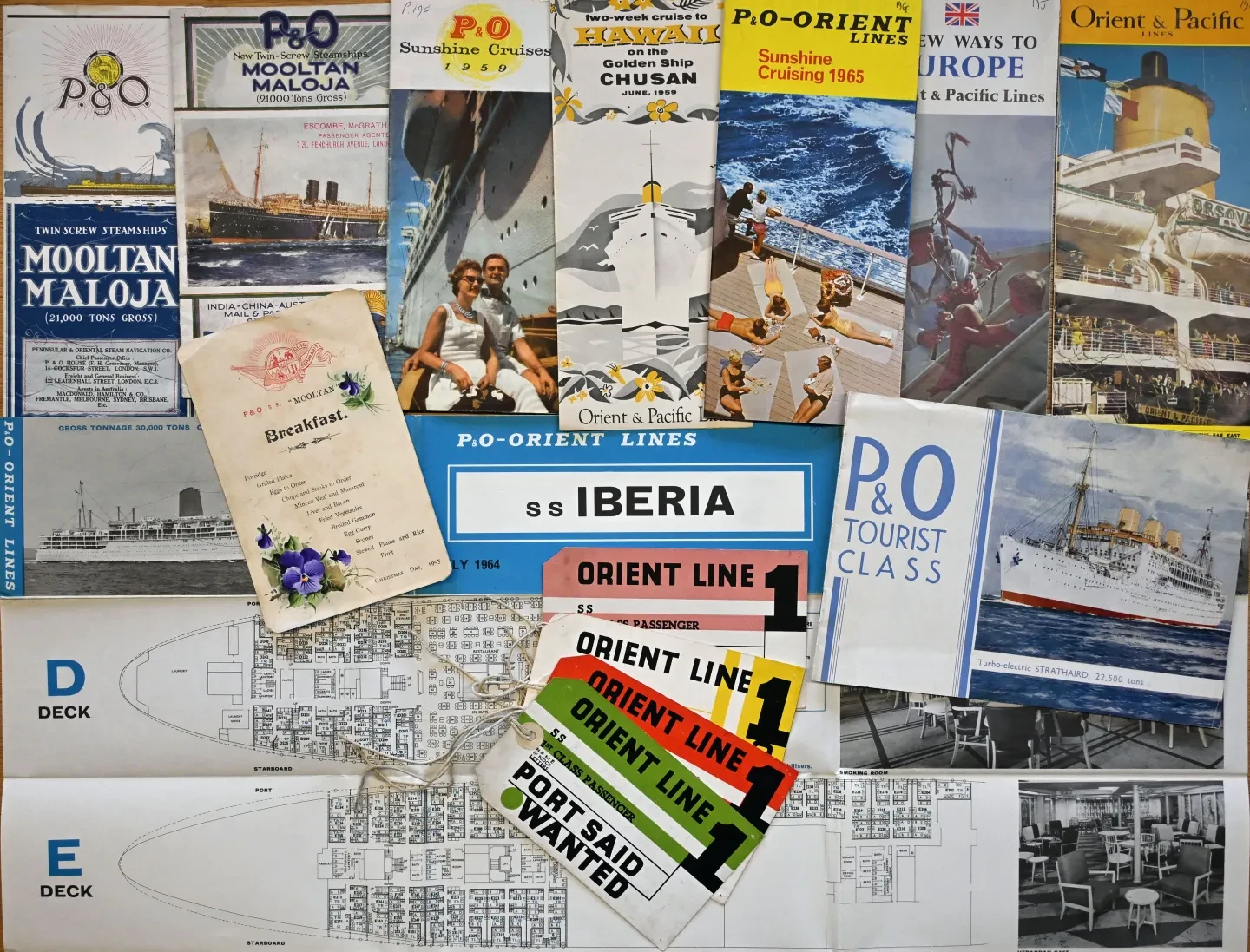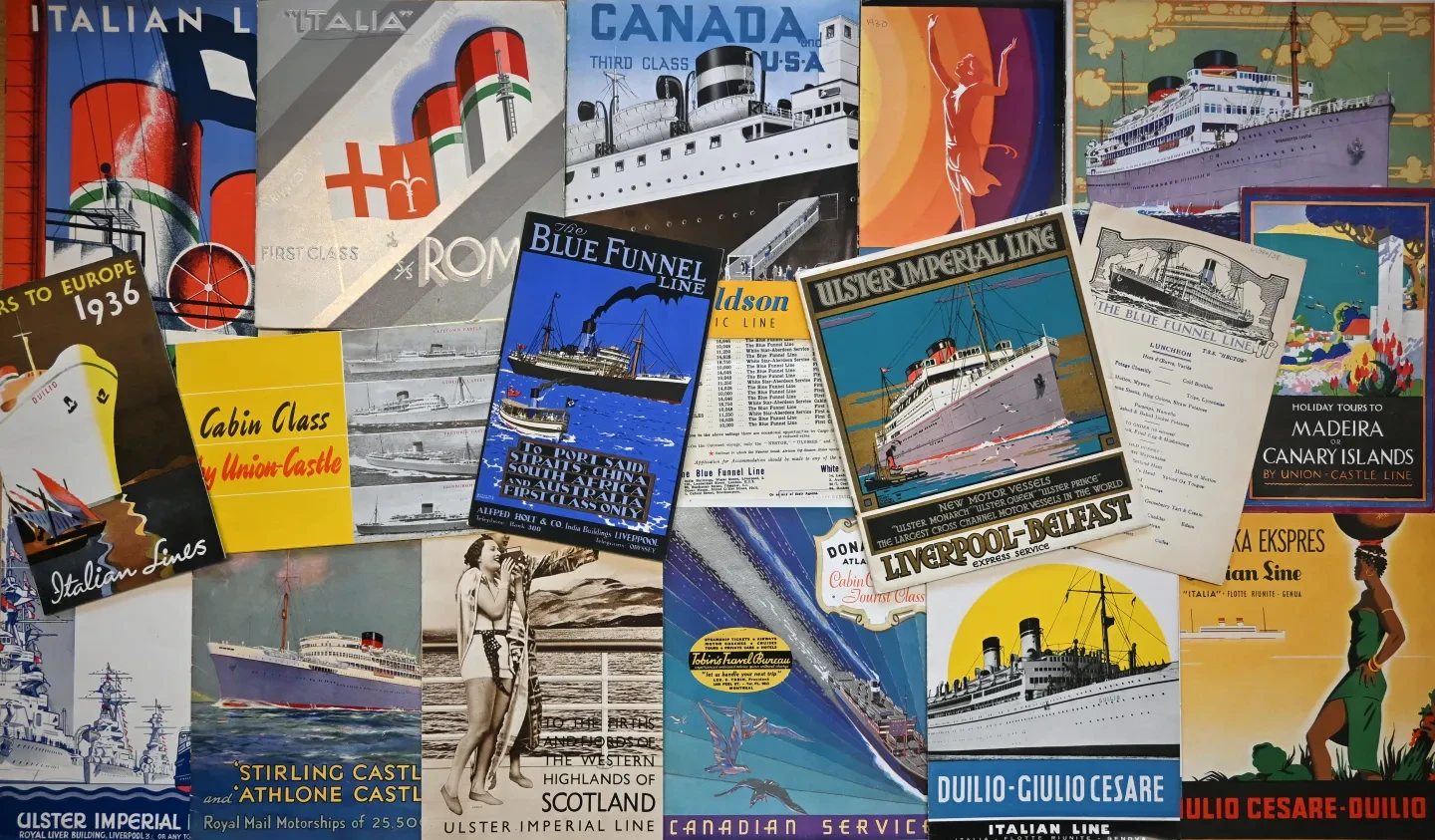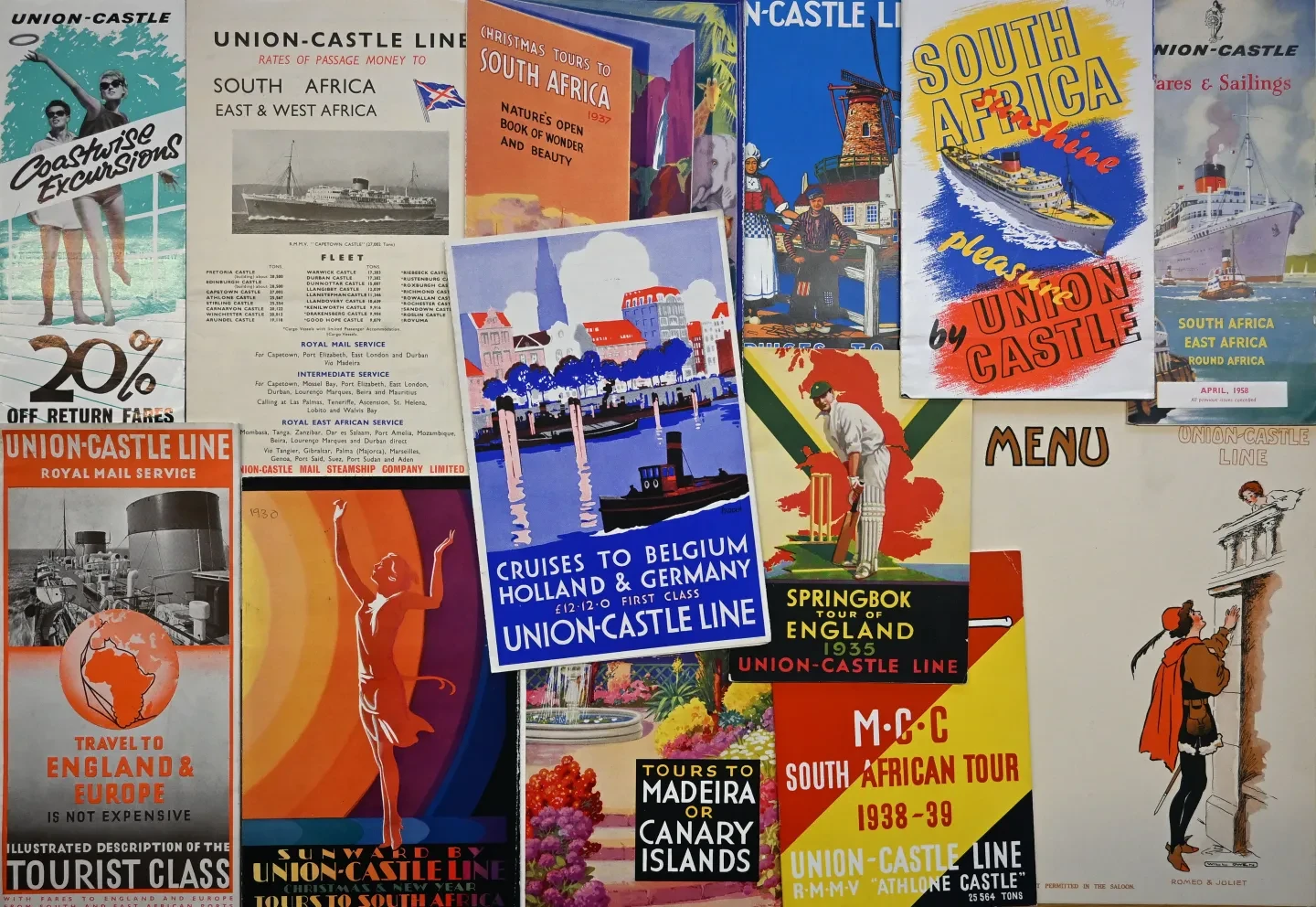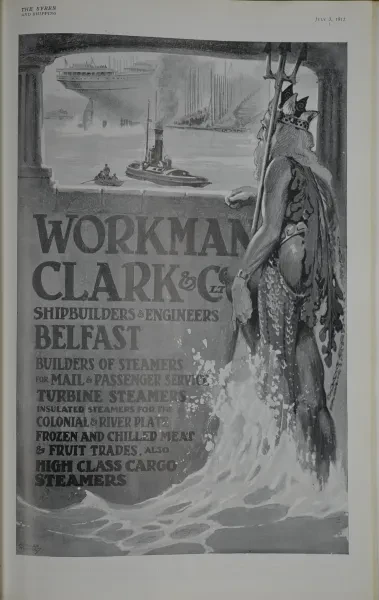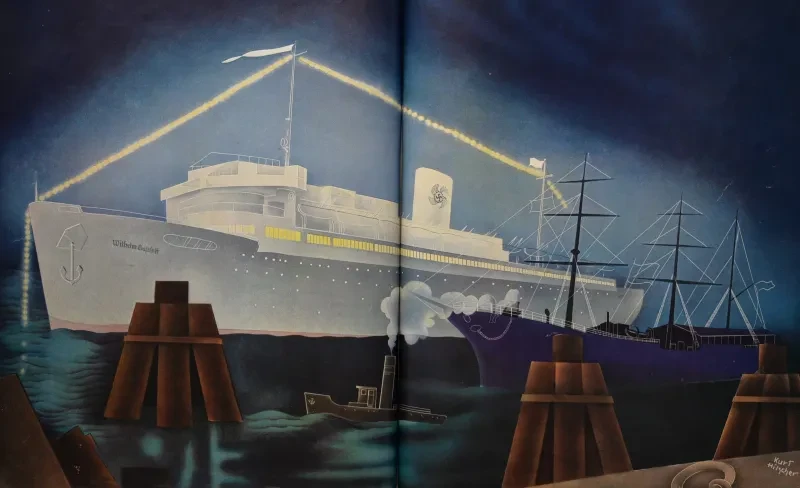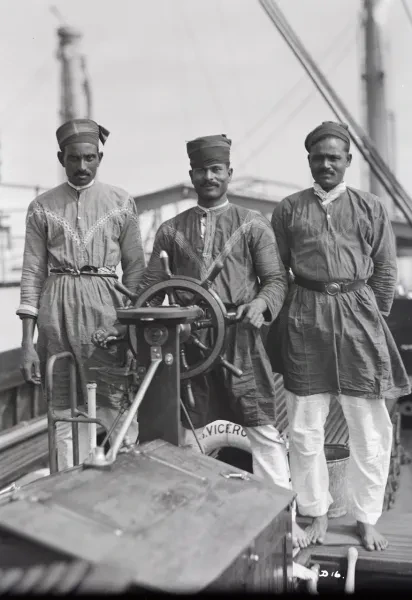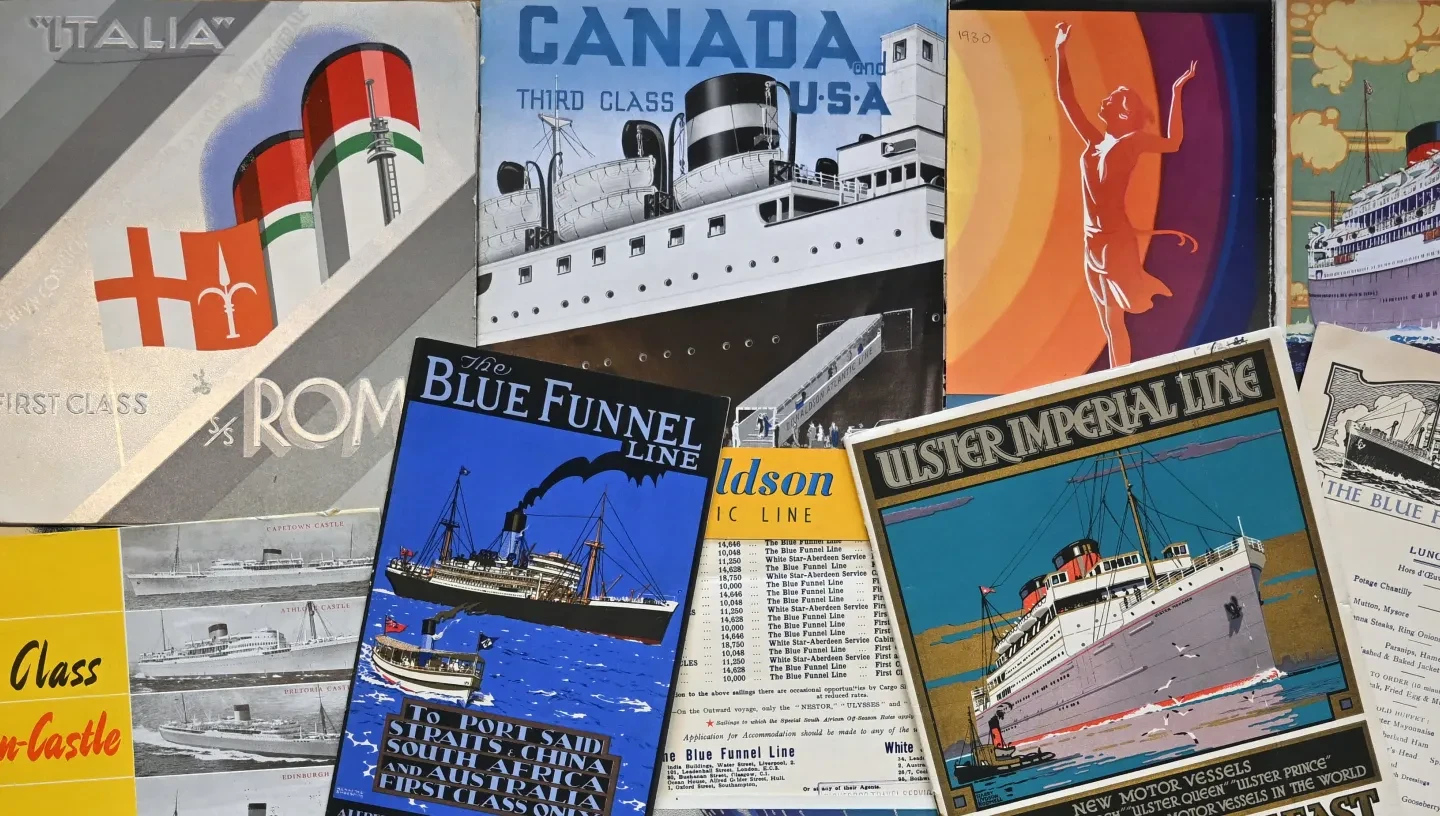
Explore printed ephemera at the Caird Library and Archive, a collection that brings to life the golden age of ocean travel.
The Caird Library’s printed ephemera collection has recently been added to the National Maritime Museum’s online catalogue. This is the result of a long-running project, during which library staff and volunteers sorted, catalogued and rehoused over 8,000 pieces of printed ephemera, providing library users with greater access to this area of our collection.
This collection’s focus is on the experience of ocean travel during the twentieth century, but also includes items relating to the Royal Navy, marine technology, the London 2012 Olympic Games equestrian events held in Greenwich and other subjects.
What is printed ephemera?
Printed ephemera refers to items produced for short-term publicity or commemorative purposes, often with the expectation that the item would be thrown away after use.
Within the library collection, these items have been collected from various sources over the years. Some were specifically acquired by the Museum, while others were donated by the shipping companies themselves. Most, however, arrived as part of larger donations of maritime books and pamphlets.
As these items often do not have a clear title or author in the way a published book would, they needed to be catalogued separately from our other printed collections, with some items receiving a descriptive title placed in square brackets to indicate this is not printed on the item.
You may also find examples of similar items on the archive catalogue, for example brochures or timetables within shipping company archives, but these do not form part of the printed ephemera collection.
As these items are often very small, sometimes just a single sheet of paper, they needed to be rehoused as they were catalogued to help organise the collection, to aid the items' preservation and allow safe handling of these delicate items by library users. The result was over 200 boxes of neatly packaged material, which can now be requested for viewing in the library.
The completion of this project would not have been possible without the contribution of library volunteers over the years who have generously given their time towards collections tasks such as this. I would especially like to thank Ariede Migliavacca for her invaluable contributions to this project over her many years as a volunteer with us.
Ocean travel
Most of the items relate to ocean travel, particularly the passenger experience during the twentieth century. The collection contains a range of different item types primarily produced for use by passengers on board ships, such as deck plans, luggage labels and menu cards as well as brochures and other advertisements aimed at attracting people to take a cruise.
Many of these items provide a glimpse of the glamour and luxury of ocean travel available to some passengers in the early twentieth century, showcasing the accommodation and facilities on board ships as well as the food and entertainment they could enjoy during the voyage. In addition, there are simpler items such as headed note paper for passengers to send letters, or invitations for passengers to have cocktails with the captain.
There are also ‘passenger lists’ which we believe to have been produced based on bookings for a cruise. These are distinct from official passenger lists which can be accessed via genealogy websites such as Ancestry. Those found within printed ephemera are not a detailed official record of who was on board the ship, but are instead more of an informative leaflet for the use of passengers to know who else might be on board during their cruise.
While the bulk of the collection is comprised of material produced by large British shipping companies such as Cunard, P&O and Union-Castle, it also contains an array of material produced by shipping companies of all sizes from across the globe.
These items help to illustrate how different shipping companies advertised their ships and services and may be of interest to researchers looking at ocean travel, shipping company histories, and graphic design. They can offer insight into how these companies used images of different countries, their cultures and the natural world to attract tourists to their services and how the types of images used evolved over time.
The collection includes smaller numbers of items on other subjects, such as brochures for events commemorating the bicentenary of the Battle of Trafalgar, Royal Naval fleet reviews, visits of foreign fleets, and advertising material for marine technologies from firms such as Racal-Decca.
There are also many items relating to the staging of the equestrian events held in Greenwich Park as part of the London 2012 Olympic Games.
Accessing printed ephemera
You can search for ephemera using the online catalogue via the Collections section of the Royal Museums Greenwich website. Printed ephemera have item ID numbers beginning with the letters PEA or PEB followed by four numbers.
Suggested search terms include the names of ships and shipping companies, place names or events such as London 2012, as well as item types such as brochures, luggage labels, menu cards, timetables and deck plans. You can filter the search results to only display items from this collection by selecting the item category ‘Printed Ephemera’ from the drop-down list within the filters section.
Registered library users can request items from the collection for viewing by contacting the library via library@rmg.co.uk with the Item IDs they would like to view and the date they would like to visit.
You can find out more about the Caird Library, including how to register here.
